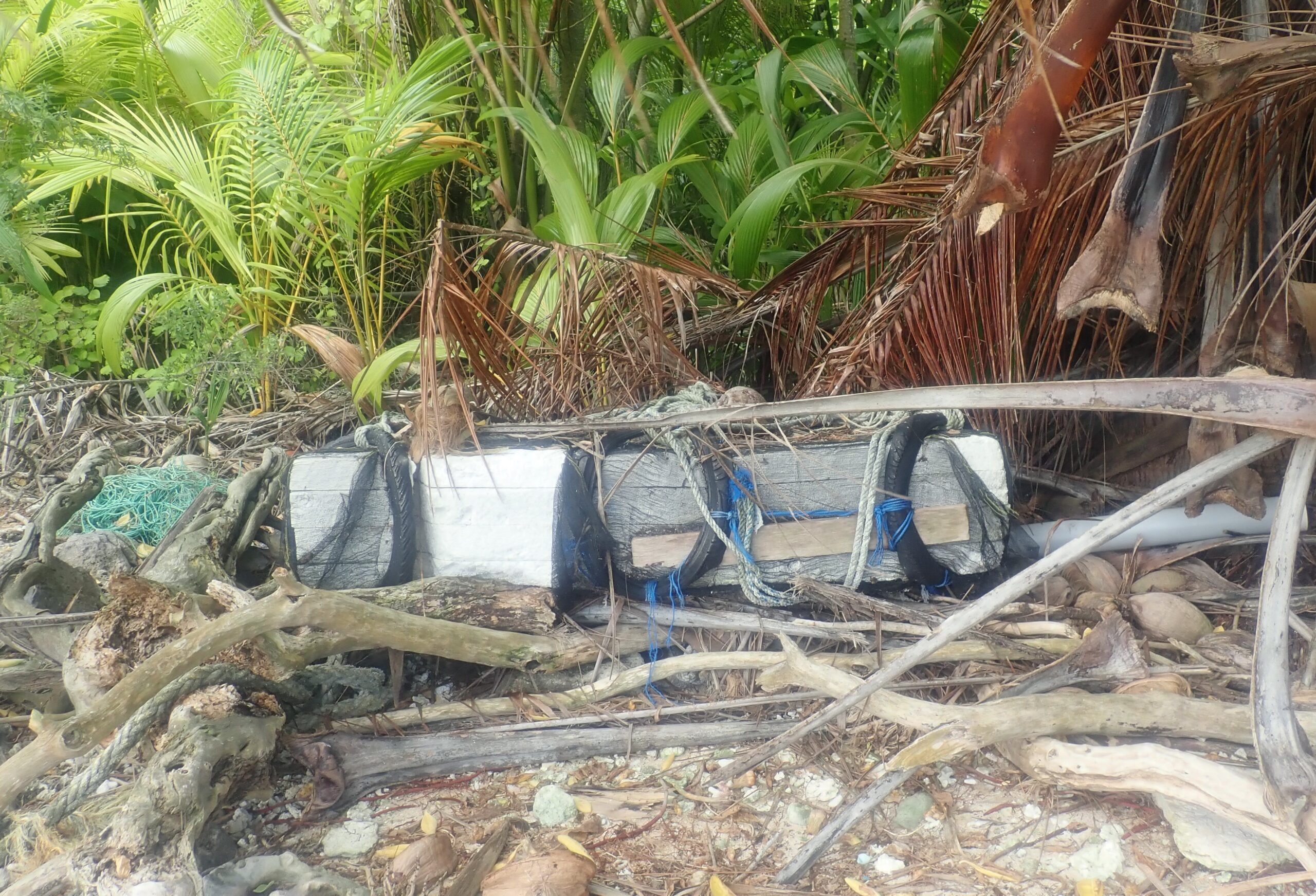Te Ipukarea Society: A healthy ocean, more than just a passing FAD
Saturday 13 January 2024 | Written by Te Ipukarea Society | Published in Environment, National

This FAD, made from polystyrene foam, PVC pipe, old tyres and synthetic netting, was found washed up on Suwarrow by Te Ipukarea Society staff in 2022. Over 50 other FADs were also found at the same time. TIS/24011201
In today’s column, we aim to shed light on the use of drifting Fish Aggregating Devices (dFADs) in tuna purse seine fishing, emphasising the ongoing environmental impact.
Many Cook Islands News readers may recall the 2015 campaign against purse seine fishing, marked by a substantial protest march and a petition, supported by over half of the voting population, urging a ban on this fishing method
The primary concern then, and still relevant today, revolves around the adverse effects of dFADs in the purse seine fishery. These artificial floating rafts traverse our oceans, attracting a smorgasbord of marine life, including the purse seiner’s main target species, skipjack tuna. While dFADs enhance catch efficiency and profitability for purse seine tuna fishing, their widespread use poses threats to marine ecosystems, fishing sustainability, and the livelihoods of coastal communities dependent on fishing
Drifting FADs are like underwater magnets for marine life, and are usually equipped with a buoy that transmits position data. They often include an integrated echo sounder that sends information back to the boat about the amount of fish present under the buoy. These dFADs attract not just target species like tuna but also a diversity of marine life which may be caught in the purse seine net. Bycatch rates around dFADs are significantly higher compared to that caught when fishing without FADs (free school fishing).
Dolphins, sharks, turtles, and other non-target species get entangled and often die in the netting that is hanging beneath the dFAD. Fortunately, new rules due to come into force this year for the Western and Central Pacific Fisheries Commission (WCPFC), prohibits the use of mesh netting and other materials that may entangle marine life for any new FADs being made.
Drifting FADs also attract immature tuna, mostly yellowfin and bigeye. This means that the catch from around dFADs has a much higher percentage of juvenile tuna than when the purse seiners are fishing on free schools of tuna. This jeopardises the long-term viability of tuna populations, as these juveniles are caught before reaching breeding age.
In addition, a young bigeye tuna caught on a purse seiner may be worth only around $2 per kg, or less than $10 per fish. If left for two or three more years, it could grow to be a 50kg specimen. This could then be caught in the longline fishery and sold for the fresh fish or sashimi market at closer to $500 or $1000.
Drifting FADs are also a source of marine pollution. They are almost always made from synthetic materials. They are floating rafts of PVC pipe, polystyrene and other plastics, though some include bamboo. By their very nature, they do not stay in one location, but drift freely across the oceans, contributing to plastic pollution. The purse seine boats only follow FADs where the echosounder shows a good biomass of fish underneath. This leaves thousands of FADs drifting the ocean till they wash up on some distant shore or damage a fragile coral reef.
Despite the responsibility of the WCPFC in managing and conserving tuna in the Western and Central Pacific Ocean, effective FAD management progresses slowly due to the Commission’s consensus decision-making approach. One dissenting party can stall meaningful regulations, mirroring global climate negotiations.
Presently, WCPFC rules allow each purse seiner to deploy up to 350 dFADs, potentially resulting in around 90,000 dFADs in the ocean at any given time. The actual number will be less than this as not all boats would deploy the maximum number of dFADs, but it will still be a huge number. The Commission’s decision to reduce the length of FAD closures further raises concerns about the risk of increased juvenile tuna catches and endangered bycatch deaths.
While the latest provisional WCPFC conservation and management measure for tropical tunas encourages a move towards biodegradable FADs, this is not compulsory. Similarly, the purse seiners are only encouraged to retrieve their FADs, with no obligation to do so.
Perhaps it’s time to reconsider the consensus approach to decision making at the WCPFC and further empower the communities relying on healthy tuna stocks for survival. A healthy, productive ocean should not be a passing fad.




































